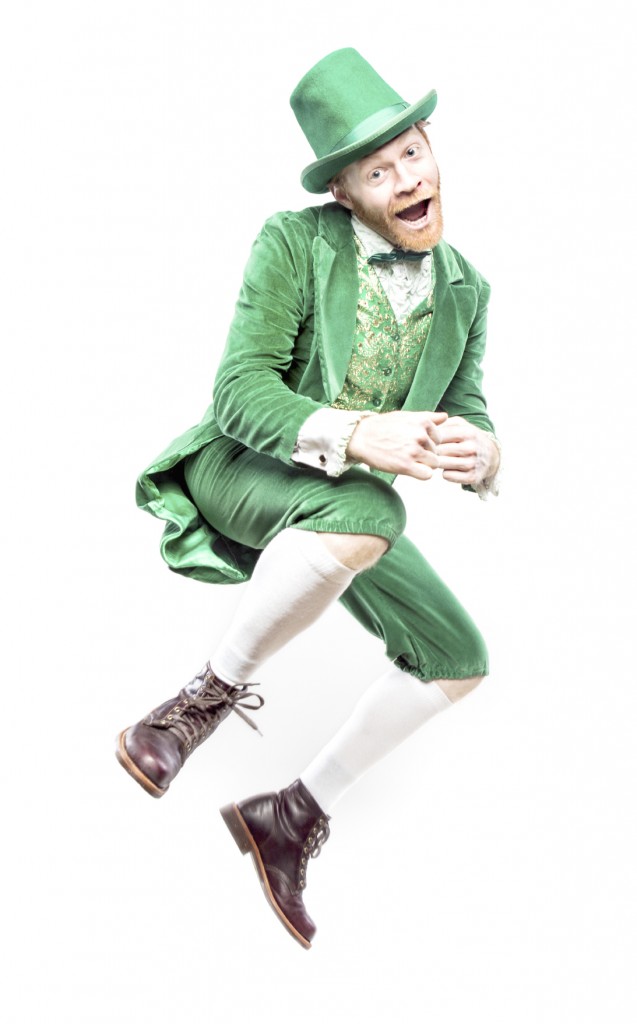45 BC: Julius Caesar, conqueror of Britain and eternal friend of the Irish, chalks up another victory, this time against Titus Labienus and Pompey the Younger in the Battle of Munda, but the clock is ticking and the old fella only has another 363 days to live.
180: Emperor Marcus Aurelius dies: a cracking day for his son Commodus, but not good for Maximus Decimus Meridius – commander of the armies of the north, general of the Felix Legion, and loyal servant to the true emperor – who becomes a father to a murdered son, husband to a murdered wife, and decides he will have his vengeance in this life or the next.
461: Saint Patrick, the patron saint of Ireland, dies. Although the year is disputed, the date is definitely not.
1040: Harold Harefoot, one of the few Danes to rule England, dies. His father, Cnut, was the one who ordered the sea to retreat – God knows what he would have made of Janteloven. Harold is succeeded by his brother Harthacnut, who as his name implies was only half as big a twat as his dad.
1737: The Charitable Irish Society organises the first ever St. Patrick’s Day parade in …. Boston, USA. Ireland eventually follows suit in the 19th century.
1762: New York hosts is first procession – a parade that has subsequently gone on to be the world’s largest with 150,000 participants, two million spectators, and five hours of marching. Some Irish soldiers serving in the English army march through the city, play some music and grumble about the weather.
1780: George Washington grants the soldiers of Irish descent under his command the day off “as an act of solidarity with the Irish in their fight for independence”. Wishful thinking from the king of revolutionaries as they have to wait another 141 years.
1861: The kingdom of Italy is proclaimed, an excuse you might think for American Italians to have their own parades. Not anymore; the Italian monarchy lasted just 85 years, surviving a coup by Mussolini before accepting the country’s declaration as a republic in 1946.
1880: Captain Oates, the Antarctic explorer, is born.
1888: A cartoon appears in Harper’s Weekly presenting a scene from a St. Patrick’s Day parade in New York City. It depicts the double standards of an American of Irish descent frowning at the thought of celebrating a saint who wasn’t even born in Ireland. He inexplicably tells a passing woman that Patrick was French. So, useless at history as well as geography.
1905: Franklin D Roosevelt keeps it in the family when he marries his distant cousin, Eleanor Roosevelt, in New York City. Another cousin, the current president Theodore Roosevelt, gives Miss Roosevelt away.
1912: After a few renditions of Happy Birthday, Captain Oates, the Antarctic explorer, tells the polar expedition: “I am just going outside and may be some time.” Anything to escape Captain Scott’s singing.
1937: Dublin hosts the first parade held in a free Ireland. Annually the parade attracts an attendance of 500,000.
1949: Patrick Duffy, the American actor best known for playing Bobby Ewing in the US soap Dallas, is born in a conventional delivery room, unaware that he will one day be reborn in a shower scene. Duffy, who converts to Buddhism in the 1970s, unsurprisingly sees nothing wrong with the reincarnation storyline, despite the fact it writes an entire series off as a dream and costs half the cast their jobs.
1949: Former Arsenal assistant manager Pat Rice is born in Northern Ireland. His parents show their allegiance to the old country and name him after St Patrick, not because, as some have claimed, they like Chinese food.
1969: Golda Meir becomes the first and only female prime minister of Israel. In fact, has any country ever had two?
1984: the start of the Oxford-Cambridge boat race is delayed by a day after the Cambridge vessel collides with a barge and sinks. Apparently the boat’s cox, who is only 163cm tall, failed to see the barge due to a view obstructed by the protruding chins of the rowers.
1992: Moscow hosts its first ever parade, featuring Russian marching bands, Cossack horsemen and 15 floats representing Russian businesses. And Boris Yeltsin falls over attempting the Riverdance.
1995: British gangster Ronnie Kray dies after a career in which he committed every crime in the book, including murder, extortion and sleeping with men – an offence in Britain until the passing of the Sexual Offences Act in 1967. A year earlier Ronnie had shot George Cornell in the Blind Beggar in Whitechapel for calling him a “fat poof” out of fear that Cornell was going to grass him up to the authorities for being a homosexual. Once inside, buggery is made legal, which might explain why the penal authorities decided Mad Ron should share a cell with Yorkshire Ripper Peter Sutcliffe in Broadmoor.
1999: The International Olympic Committee expels six of its members following a bribery scandal, apparently over its decision to grant official Olympic status to drug taking. Although initially controversial, it goes on to be the event’s most popular discipline.
2001: The inaugural St Patrick’s Day Three-legged Race is run. The event is declared an instant success – most particularly by most of the legless competitors.
2005: The St Patrick’s Day Parade joins the party. Brian McKenna, the landlord of The Globe, an Irish pub on Nørregade, threatens to turn the canals of the city green for the day. Suddenly, out of nowhere, Copenhagen is emerging as one of the best places in the world to spend the day.
2008: The Three-legged Race is run in a blizzard and several competitors get lost, eventually finishing hours later. The organisers respond by introducing a limit – not on the consumption of beer (perish the thought), but on the finishing time.
2011: Never one to shy away from a thematically strong lead story, the Copenhagen Post reports the news the whole of Denmark has been dreading for over 400 years with the headline “Alas poor Mick, I thought I knew myself”. It turns out Hamlet wasn’t based on the story of a Danish prince after all, but an Irishman by the name of Admlithi. As his story crossed over the North Sea, he became known as Amlothi and then Amleth – the name used by Saxo Grammaticus in the 12th century work ‘Gesta Danorum’.
2013: The Little Mermaid joins the party, turning green for the occasion along with the likes of the Pyramids and the Christ the Redeemer Statue in Rio.














